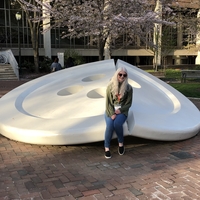Planetary Systems Around Milky Way Stars
Our project was designed to identify new exoplanets, planets that orbit stars outside the solar system. The search for exoplanets is a rapidly expanding field of astronomy that is relevant for the insights it provides regarding the formation of solar systems, the existence of Earth-analog worlds, and the hunt for extraterrestrial life. Many recent exoplanet discoveries have been made indirectly by identifying planetary transits, periodic dips in the brightness of a star caused by an exoplanet passing in front of the star and obscuring a small proportion of its light. Our goal was to search for exoplanets that are too small to find individually by stacking many weaker signals from transits to form a single, stronger signal. The intention was to use the combined signal to determine whether a proportion of stars within a large population hosted a number of exoplanets rather than finding each exoplanet individually. The statistical techniques developed in our research, tested on both simulated data and data from NASA’s Transiting Exoplanet Survey Satellite (TESS), produced results consistent with the established limits of modern exoplanet detection techniques. Our methods were able to distinguish simulated populations of stars hosting planets of approximately 1.75 Earth radii orbiting solar analogs from comparable populations of stars without exoplanets. We also discuss our plans to continue our exoplanet research using machine learning algorithms to identify potential planetary transits.

Comments
Future Directions
Hi Sarah,
Your results seem really promising in supporting your technique to find small exoplanets. I was wondering what kind of exoplanets you planned to search for in the future with the CNNs that you mentioned. Would this be another way to find small exoplanets that could not normally be detected? Or does it not distinguish exoplanets based on size?
What other objects you have…
What other objects you have been detecting if they weren't exoplanets?
Great job Sarah, I'm…
Great job Sarah, I'm wondering what type of machine learning algorithms you plan on using?